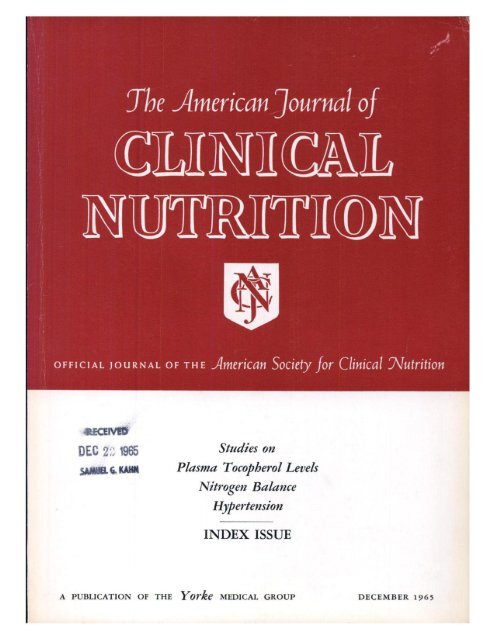The association of early pregnancy vitamin D and BMI status with composite adverse pregnancy outcomes: an ancillary analysis of the Vitamin D Antenatal Asthma Reduction Trial
IF 6.5
1区 医学
Q1 NUTRITION & DIETETICS
引用次数: 0
Abstract
Background
Adverse pregnancy outcomes (APOs) affect ∼20% of pregnancies and pose significant health risks for mothers and fetuses. Identifying risk factors is crucial for developing prevention strategies.
Objectives
This study examined the association between vitamin D status, measured by 25-hydroxyvitamin D (25(OH)D) concentrations, and APO risk, and whether this association varies by pregnancy timing and body mass index (BMI) (kg/m2).
Methods
In this ancillary analysis of the Vitamin D Antenatal Asthma Reduction Trial, we used multivariable logistic regression models to examine the association between 25(OH)D concentrations in early (10–18 wk) and late (32–38 wk) pregnancy, and development of a composite APO outcome, including pre-eclampsia, gestational hypertension, gestational diabetes, intrauterine growth restriction, and preterm birth.
Results
Among 816 participants in the intention-to-treat analysis, 283 composite APO events occurred. Vitamin D supplementation did not significantly reduce APO risk. Participants who developed APOs had lower baseline 25(OH)D concentrations than those who did not (mean ± SD: 21.72 ± 10.04 vs. 23.47 ± 10.29 ng/mL; mean difference ± SE: 1.75 ± 0.78; P = 0.026). A significant interaction was observed between baseline 25(OH)D and BMI (interaction term, odds ratio [OR]: 1.04; 95% confidence interval [95% CI]: 1.00, 1.08; P = 0.041). Among participants with BMI < 25 (reference group), each unit increase in baseline 25(OH)D (ng/mL) was associated with 4% lower odds of developing an APO (OR: 0.96; 95% CI: 0.93, 0.99; P = 0.013), whereas no association was observed among participants with BMI ≥ 25 kg/m2 (OR: 1.00; 95% CI: 0.98, 1.02; P = 0.83). Third-trimester 25(OH)D concentrations did not differ between participants with and without APOs.
Conclusions
Although vitamin D supplementation did not reduce APO risk, higher early pregnancy 25(OH)D concentrations were associated with lower odds of APOs in participants with BMI < 25. These findings highlight the potential importance of higher early pregnancy 25(OH)D concentrations, particularly among those with normal BMI, in reducing APO risk.
Trial registration
This study is an ancillary analysis from VDAART, which is registered with ClinicalTrials.gov (NCT00920621: https://clinicaltrials.gov/study/NCT00920621?term=vdaart&rank=1).
妊娠早期维生素D和BMI状况与复合不良妊娠结局的关联:维生素D产前哮喘减少试验的辅助分析
背景:不良妊娠结局(APOs)影响近20%的妊娠,并对母亲和胎儿造成重大健康风险。确定风险因素对于制定预防战略至关重要。目的:本研究探讨了25-羟基维生素D (25(OH)D)浓度测量的维生素D状态与APO风险之间的关系,以及这种关系是否因怀孕时间和体重指数(BMI)而变化。方法:在这项维生素D产前哮喘减少试验的辅助分析中,我们使用多变量logistic回归模型来检查妊娠早期(10-18周)和晚期(32-38周)25(OH)D浓度与复合APO结局(包括先兆子痫、妊娠高血压、妊娠糖尿病、宫内生长受限和早产)发展之间的关系。结果:在意向治疗分析的816名参与者中,发生了283例复合APO事件。补充维生素D并没有显著降低APO的风险。发生APOs的参与者基线25(OH)D浓度低于未发生APOs的参与者(平均±SD: 21.72±10.04 vs 23.47±10.29 ng/mL;平均差值±SE: 1.75±0.78;P = 0.026)。基线25(OH)D与BMI之间存在显著的交互作用(交互作用项OR为1.04;95% ci: 1.00, 1.08;P = 0.041)。在BMI为2的参与者(参照组)中,基线25(OH)D (ng/mL)每增加一个单位,发生APO的几率就会降低4% (OR 0.96;95% ci: 0.93, 0.99;p = 0.013),而BMI≥25 kg/m2的受试者无关联(OR 1.00;95% ci: 0.98, 1.02;P = 0.83)。孕晚期25(OH)D浓度在有和没有apo的参与者之间没有差异。结论:虽然补充维生素D并不能降低APO的风险,但在BMI为2的参与者中,较高的妊娠早期25(OH)D浓度与较低的APO风险相关。这些发现强调了妊娠早期较高的25(OH)D浓度在降低APO风险方面的潜在重要性,特别是在BMI正常的孕妇中。试验注册:本研究是VDAART的一项辅助分析,该研究已在ClinicalTrials.gov (NCT00902621: https://clinicaltrials.gov/study/NCT00920621?term=vdaart&rank=1)注册。
本文章由计算机程序翻译,如有差异,请以英文原文为准。
求助全文
约1分钟内获得全文
求助全文
来源期刊
CiteScore
12.40
自引率
4.20%
发文量
332
审稿时长
38 days
期刊介绍:
American Journal of Clinical Nutrition is recognized as the most highly rated peer-reviewed, primary research journal in nutrition and dietetics.It focuses on publishing the latest research on various topics in nutrition, including but not limited to obesity, vitamins and minerals, nutrition and disease, and energy metabolism.
Purpose:
The purpose of AJCN is to:
Publish original research studies relevant to human and clinical nutrition.
Consider well-controlled clinical studies describing scientific mechanisms, efficacy, and safety of dietary interventions in the context of disease prevention or health benefits.
Encourage public health and epidemiologic studies relevant to human nutrition.
Promote innovative investigations of nutritional questions employing epigenetic, genomic, proteomic, and metabolomic approaches.
Include solicited editorials, book reviews, solicited or unsolicited review articles, invited controversy position papers, and letters to the Editor related to prior AJCN articles.
Peer Review Process:
All submitted material with scientific content undergoes peer review by the Editors or their designees before acceptance for publication.

 求助内容:
求助内容: 应助结果提醒方式:
应助结果提醒方式:


